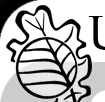the Straley Project
Dr. Gerald Straley was a well known, respected and admired botanical expert on both cultivated plants and the natural flora of British Columbia, and beyond. The Herbarium has recently digitized his collection of vascular plants and it is now available online, along with information about Dr. Straley.
access the Straley Project >
Algae
The Algal collection is composed of mainly macroscopic algae, with significant representation of seaweeds of the Northeast Pacific Ocean. The algae are mostly dry and mounted onto 11.5 x 16.5 inch archival paper. The collection also includes packages of organisms such as diatoms and dinoflagellates. Some blue-green algae are also represented.
Approximate number of specimens:
67 000
access the collection >
Bryophytes
Bryophytes comprise the terrestrial non-vascular plants, that is, plants lacking extensive tissue specialized in the movement of water or nutrients. This group includes mosses, liverworts, and hornworts. The specimens are enclosed in paper packages. These packages are then housed in shoeboxes.
Approximate number of specimens:
227 000
access the collection >
Vascular Plants
Vascular plants contain the angiosperms (flowering plants), gymnosperms (conifers), ferns and fern allies. Most of these plants are pressed and mounted onto archival paper. Large fruits and cones are kept separately in boxes.
Approximate number of specimens:
222 000
access the collection >
view type specimens >
Fungi
Fungi represent a separate Kingdom from plants and contain the basidiomycetes (including mushrooms, shelf fungi), ascomycetes (morels, truffles, molds, yeasts), and teliomycetes (smuts, rusts), as well as slime molds. Specimens are kept in paper packages or boxes, depending on size, while some fungal cultures are kept on petri dishes.
Approximate number of specimens:
15 000
access the collection >
Lichen
Lichen are a symbiotic association between a fungi and an algae, they are very diverse in morphology and can be found in a very wide range of habitats. Most specimens are kept in paper packages like the Bryophytes.
Approximate number of specimens:
35 000
access the collection >
|







